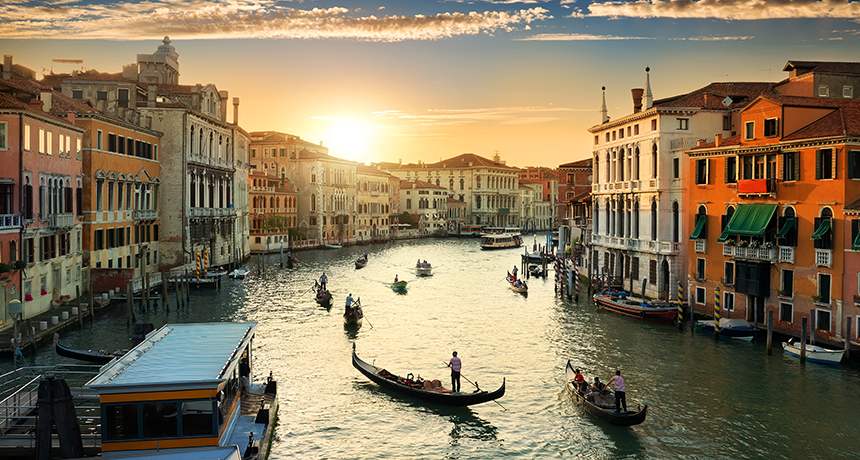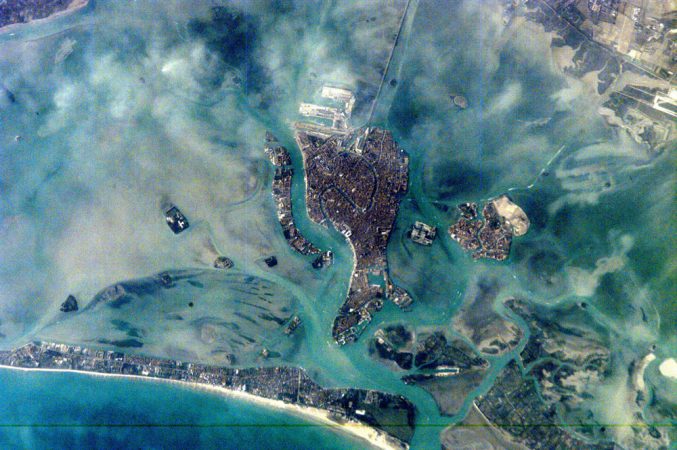The sinking city
Venice, Italy continues to slip into the sea

Every year this Italian city sinks a bit deeper into the sea. The rate has slowed, but not stopped.
Givaga/iStockphoto
The Italian city of Venice, long known for its architecture, art, and canals, is sinking. The city sits on a chain of islands along the coast of the Adriatic Sea, a northern arm of the larger Mediterranean Sea. Every year, the buildings drop a little lower, and the sea laps a little higher. In a new study, scientists report that the sinking has slowed down in recent years, but it hasn’t stopped.
“It was thought that the sinking had pretty much been stabilized, but now we know it will continue into the future indefinitely,” Yehuda Bock told Science News. Bock is a geodesist at the Scripps Institution of Oceanography in La Jolla, Calif. Geodesists measure and try to understand Earth’s shape, often by studying the strength of gravity, a force of attraction between objects.
To measure Venice, Bock and his colleagues enlisted the help of satellites. Some of the team’s data came from a Canadian satellite called RADARSAT-1, which monitors environmental changes. Other data came from devices that use GPS, or the global positioning system. A machine that uses GPS can determine its exact location by communicating with satellites. A GPS device in your car, for example, may help you plan the best path to your destination.
Soil beneath Venice is compacting, which means particles are getting squeezed closer together, the scientists say. As soil compacts, the city sinks. Bock and his colleagues determined that between the years 2000 and 2010, the city of Venice sank between 1 and 2 millimeters — a little more than the thickness of a compact disk — every year. The city sank even more quickly in some neighboring areas.
Bock told Science News that Venice isn’t sinking as fast as it used to. Other coastal cities, like New Orleans, are sinking faster.
Tazio Strozzi, a scientist who works with satellites in Gümligen, Switzerland, told Science News that 1 to 2 millimeters a year isn’t alarming. “We think this is a very small number,” he said.
Even a couple millimeters, however, does make a difference, says Bock. In the past 100 years, average sea level has been rising. In Venice, sometimes nicknamed the “City of Water,” rising seas increase the risk of flooding during storms. The city has had to find creative ways to keep ocean water from invading and destroying the art and architecture for which Venice has become famous. A few more millimeters could make that task even more difficult.
Already, Bock notes, the city has created barriers to raise during high tide. “They’ll probably have to use them more often than they had anticipated,” he told Science News.








